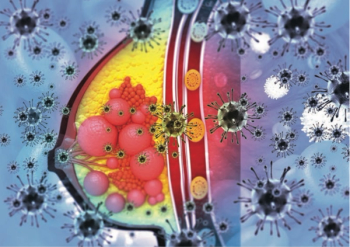
Engaging in the Recommended Amount of Physical Activity May Help Prevent 7 Cancer Types
Though physical activity guidelines are largely based on chronic diseases like cardiovascular disease and diabetes, these data suggest they are important to cancer prevention as well.
According to a study published in the Journal of Clinical Oncology, engagement in the recommended amount of leisure-time physical activity (7.5-15 MET hours/week) was associated with lower risk for 7 different cancer types.1
While it has previously been known that physical activity is associated with a lower risk for several cancers, it was unclear if guideline recommended amounts of physical activity were associated with lower risk.2
“Physical activity guidelines have largely been based on their impact on chronic diseases like cardiovascular disease and diabetes,” Alpa Patel, PhD, senior scientific director of epidemiology research at the American Cancer Society, said in a press release. “These data provide strong support that these recommended levels are important to cancer prevention, as well.”
In this cohort of 755,459 participants, individuals were followed for 10.1 years, and 50,620 incident cancers accrued during that time. Engagement in recommended amounts of activity were associated with a statistically significant lower risk for 7 of the 15 cancers studied, including colon (8%-14% lower risk in men), breast (6%-10% lower risk), endometrial (10%-18% lower risk), kidney (11%-17% lower risk), myeloma (14%-19% lower risk), liver (18%-27% lower risk), and non-Hodgkin lymphoma (11%-18% lower risk in women).
Both moderate- and vigorous-intensity activity seemed to be associated with lower risk for colon, breast, and kidney cancer, but the sample size for other cancer types was too limited to draw conclusive data. Adjustment for BMI eliminated the association with endometrial cancer but had a limited effect on other cancer types.
Approximately half of the cancers associated with physical activity were found to have linear dose-response curves (colon, breast, endometrial, and head and neck cancer, as well as esophageal adenocarcinoma), with the lowest risk at levels well above the recommended minimum level of activity. For several cancers with a curvilinear association (kidney, gastric, and liver cancer), most of the risk reduction observed was associated with recommended amounts of physical activity.
“This finding may explain in part previous observations that higher levels of activity were needed to achieve significantly lower risk of colon and breast cancer,” the authors wrote. “Given these linear associations, substantially lower relative risk estimates may have only been observable at higher activity levels in previous studies, particularly given smaller participant numbers and more limited statistical power in individual studies.”
Additionally, the difference in the strength of associations for engaging in 7.5-15 MET hours/week when comparing results for breast cancer and liver cancer may reflect relevant differences in the underlying biologic mechanisms for distinct cancer types. These findings might indicate that there are fundamentally different physical activity dose-response relationships for all-cause and cardiovascular mortality and some cancers and sizable variation in the underlying biologic mechanisms that link physical activity to different types of cancer, however additional research is needed.
Furthermore, researchers suggested that these findings provide actionable evidence for ongoing and future cancer prevention efforts, including the guidance that health care providers, fitness professionals, and public health practitioners should encourage adults to adopt and maintain physical activity at recommended levels.
References:
1. Matthews CE, Moore SC, Arem H, et al. Amount and Intensity of Leisure-Time Physical Activity and Lower Cancer Risk. Journal of Clinical Oncology. doi:10.1200/JCO.19.02407.
2. Report links recommended physical activity levels to lower risk of seven cancers [news release]. Published December 26, 2019. eurekalert.org/pub_releases/2019-12/acs-rlr122319.php. Accessed January 3, 2020.
Newsletter
Stay up to date on recent advances in the multidisciplinary approach to cancer.

















































































